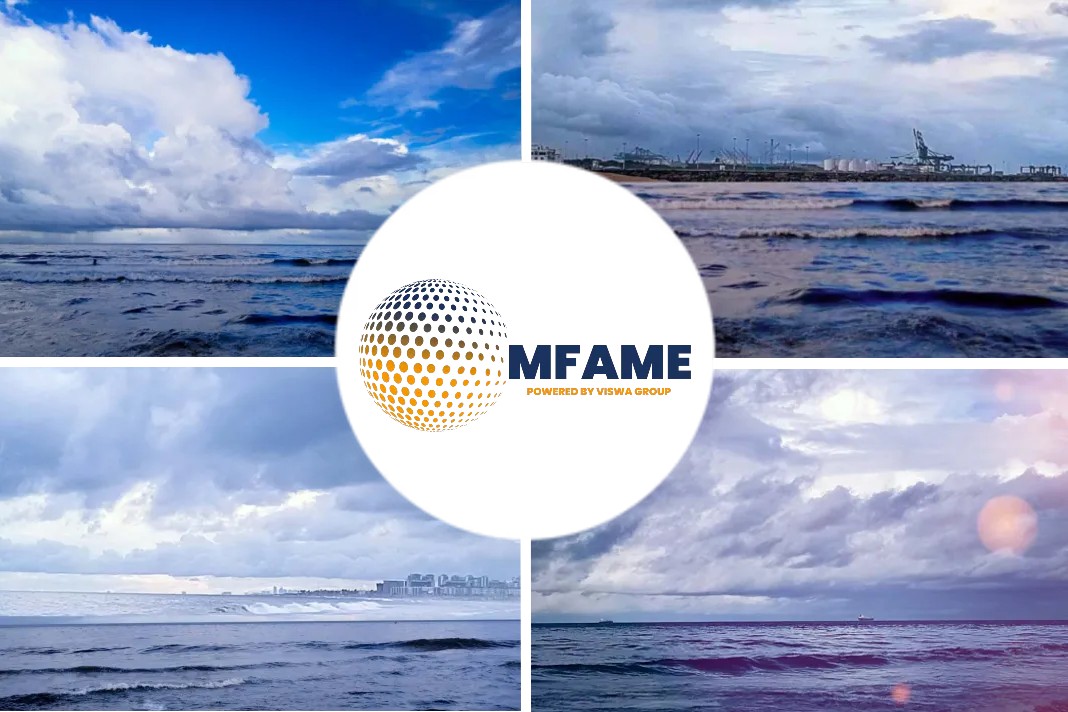
A recently published news article by James Stavridis, a Bloomberg Opinion columnist reveals about what it will take to make the world’s ships run on time.
He is a retired U.S. Navy admiral and former supreme allied commander of NATO, and dean emeritus of the Fletcher School of Law and Diplomacy at Tufts University. He is also chair of the board of the Rockefeller Foundation and vice chairman of Global Affairs at the Carlyle Group. His latest book is “2034: A Novel of the Next World War.”
James Stavridis experiences
I spent nearly 10 years on the deep ocean — entirely out of sight of land. During the long voyages, I would track the massive civilian cargo ships and oil tankers sailing near my warships. An exquisite system keeps them running essentially 24/7, hustling cargoes among a network of global megaports.
Those of us at sea watched with respect for their size and scale, mingled with a sense that they were so often on the edge of trouble. Shippers’ margins on time and cost are thin, and their crews are incredibly small, often not adequately trained or sufficiently compensated.
All of these factors are playing into the current delays with raw materials and consumer goods in the global supply chain.
Naturally, these delays aren’t entirely dependent on ocean transportation. But given that more than 90% of internationally traded goods move through what the 19th-century naval strategist Rear Admiral Alfred Thayer Mahan called the “sea lanes of communication,” it is a good place to focus more attention.
The huge ports are part of the maritime infrastructure as well, and some of them have become structural choke points, much as we think of critical geographic choke points like the Suez or Panama canals or the straits of Hormuz or Malacca.
At the moment, serious backups and delays continue to be the norm at ports around the world. The largest American complex is in Southern California, the ports of Los Angeles and Long Beach.
For weeks, dozens of vessels have been waiting at anchor offshore. Thousands of empty containers still need to be sent to other ports. And as is the case at many other key ports worldwide, cargo infrastructure is overwhelmed.
Part of the problem has to do with how we think of supply chains. They are not really chainlike in the sense of being simple, linear pathways. If they were, the problems would be easier to fix.
They are more accurately envisioned as networks or even a cloud — as nonlinear as the sea itself. In essence, the global supply chain is a host of distinct nodes that function smoothly only if they are synchronized.
When the “just in time” system falters, the network’s extraordinary interconnections — ordinarily a strength — create problems.
As COVID-19 has made it difficult to get manpower to the docks to offload ships, those problems have been magnified throughout the network.
COVID also impedes the flow of mariners from land to sea and back as national quarantines, testing regimes and border closings are put in effect.
Global maritime systems still need to adjust to all of this. The big shipping companies (A.P. Moller-Maersk, Mediterranean Shipping Co., China Ocean Shipping Co., Evergreen Marine Corp.) and associated organizations (the UN International Maritime Organization, Lloyd’s of London) have to collectively assess the bottlenecks.
Governments need to participate through their associated agencies, such as the U.S. Maritime Administration (MARAD). This is at heart an intelligence function, and only by pooling vast sets of data can the extent of the problem be understood.
President Joe Biden is right to keep up a conversation with retailers and other business leaders about measures to get the supply chain moving.
(I am a board member of the Greek Onassis Foundation, which runs a substantial international shipping business headquartered in Europe, and I consult for Crowley Maritime in the U.S.)
Armed with a clear idea of how the maritime network is functioning, experts can apply appropriate analytical tools (including nascent artificial intelligence techniques) to formulate solutions.
In the U.S., for instance, a plan is needed to shift cargo delivery away from overloaded ports to underused ones. The U.S. has few megaports (only Los Angeles and Long Beach are in the world’s top 20) but many smaller ones — a legacy of our vast coastline and decentralized infrastructure. That weakness could be turned into a strength.
It would also help to know where it’s best to invest in port improvements. As the Transportation Department carries out the recently passed infrastructure legislation, this effort should be a priority.
Over the long term, it’s important to invest in global shipping, beginning with mariners themselves. In the U.S., this means supporting merchant marine colleges, including the U.S. Merchant Marine Academy at Kings Point, New York, and state maritime colleges.
Governments including the U.S. should also subsidize environmentally safe shipping operations and improvements in port technology — including collapsible shipping containers, “smart” offload cranes and pop-up warehouses to handle overflow.
The current global system has been desynchronized not only by COVID-induced manpower shortages but also by extraordinary delayed demand for durable goods, aging and neglected infrastructure, and severe weather disturbances. The combined effects will take a year to unwind.
Unfortunately, though unsurprisingly, this problem also has a geopolitical aspect. Controversy over which country runs a particular port or canal discourages the sharing of information and intelligence. The U.S.-China competition also complicates efforts to resynchronize the global shipping system.
The pressure on maritime networks is still growing, and no other option remains for moving most of the world’s goods. International cooperation among nations, interagency coordination within countries, and — above all — a high level of public-private integration will be needed to untangle the snarls in the system.
Did you subscribe to our daily Newsletter?
It’s Free! Click here to Subscribe
Source: WV News















